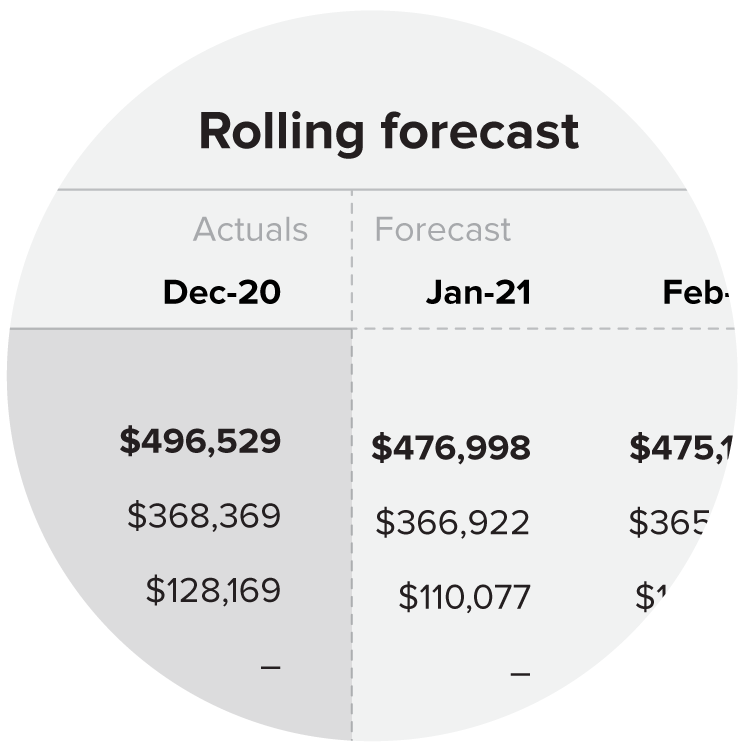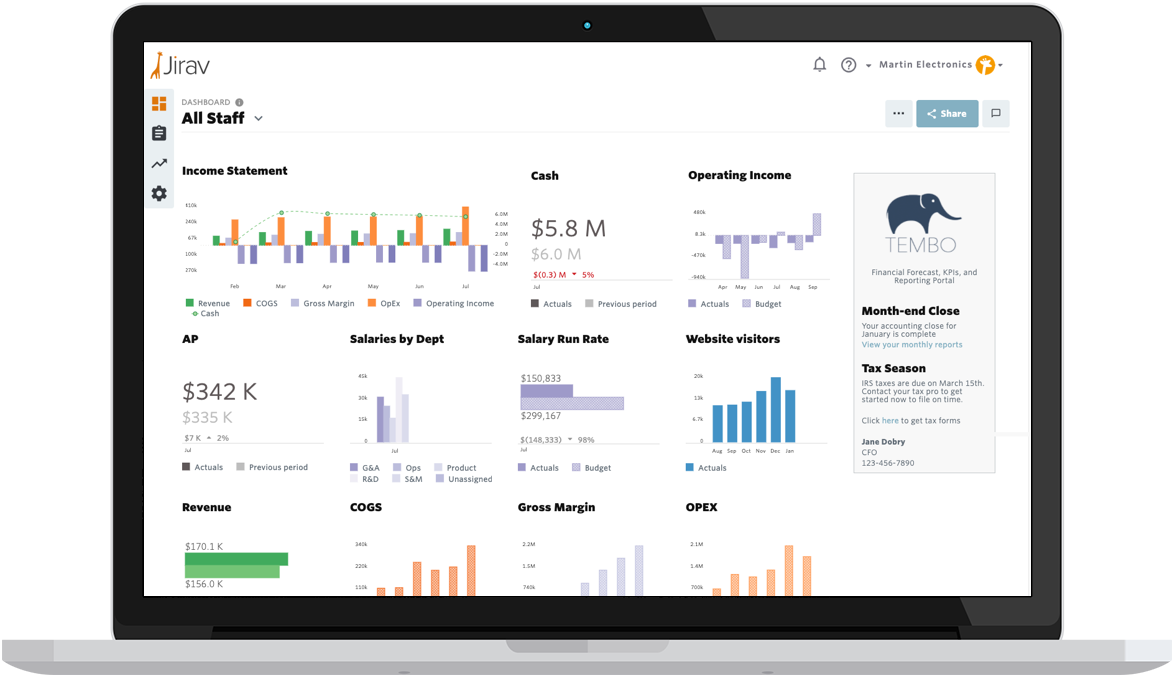Panic breeds bad decisions. Making choices in the heat of the moment is a risky practice that can have catastrophic results for your business, especially when revenues are down over thin margins.
In an economic downturn it becomes more important than ever for business leaders to follow a calculated, data-driven strategy. Failure to do so endangers both your employees and the future of your company.
Now is the time for you to take a step back, breathe, and make informed decisions rather than emotional ones. To that end, this article will discuss some of the most powerful ways you can use data to guide your business strategy during uncertain times.
Let’s get started.
Refocus on the KPIs most relevant in a crisis
During a downturn, many businesses become rightly concerned about declining revenues that may no longer cover fixed costs. You might be losing customers or finding it increasingly difficult to acquire new ones.
To make it through a crisis, your business needs to figure out how to keep revenue coming in, control costs wherever possible, and monitor cash reserves closely.
Refocusing on the Key Performance Indicators (KPIs) most relevant to those goals can help you find new and insightful ways to keep the lights on.
Let’s take a look at some KPIs that you should be paying special attention to and why.
Revenue
In a recession, it’s no surprise that businesses and individuals cut back on their spending. That’s why paying attention to top-line revenue KPIs is critical. Keep an eye on the following:
New leads/opportunities: Each month, your sales and marketing teams generate leads and opportunities. Fewer of either coming in month over month translates to lower revenue down the road. Be sure to keep an eye on that number so you’re not caught by surprise.
Close rate (%): Of course, the total number of leads generated each month is only one window into the trends of your customer acquisition process. You’ll need to take the close rate into account to get an accurate picture. For example, a consistent amount of incoming leads would be deceptive if your sales team can’t close at the same rate it could before the downturn.
Average deal size: What’s the average value of each customer? The impact here is fairly common sense thinking: if the average dollar value of each new customer goes up, bookings and revenue increase. If the average value decreases, so do your bookings. Ultimately, cash follows suit as well. If you have a good idea of your average deal size during certain times, you should be able to model the impact of any predicted change in average deal size during uncertain times.
Many leaders find that a recession can create pressure to lower the average deal size. The ability to model various scenarios around increases or decreases in average deal size becomes a critical planning tool for preparing to manage through uncertain times.
Expenses
Maximizing revenue is a priority to every business, but minimizing your costs can be just as helpful—and arguably an easier task in a downturn. Here are some KPIs that will provide insight into which expenses you might need to cut back on.
Payroll to gross revenue: Payroll costs can be one of the biggest financial burdens on a business, especially when those employees are sitting idle. It’s a hard truth, but you need to keep an eye on whether or not your business can continue to employ all its workers. Monitoring the ratio of your payroll costs and headcount to revenue can tell you objectively whether or not you need to take action.
Customer acquisition cost: As it becomes more difficult to acquire new customers, be careful to watch for a corresponding rise in the cost to acquire them. When times are tight, it’s more important than ever to optimize your marketing strategies. There’s no cash to waste on ineffective tactics, so pay attention to this metric.
Inventory turnover: If your business is product-based, you’ll most likely need to refine your supply chain and inventory plan for the pandemic. Monitoring your inventory turnover will help you adjust to the new levels of demand and avoid any unnecessary inventory costs (extra housing, oversupplying, etc).
Cash flow
While it’s important to pay attention to revenue and expenses, at the end of the day, what keeps your business operating is positive cash flow. It doesn’t matter if you’re profitable on paper when your bank account is empty and you can’t make payroll. So pay special attention to these three metrics:
Accounts receivable turnover: Maintaining your liquidity is the best way to survive financial hardship. An easy way to boost your cash reserves is to improve the rate at which your customers pay their outstanding invoices. Keep track of any customers who are lagging in their payments more than usual and be ready to come up with creative ways to collect.
Operating cash flows: Track the net cash flows from the day-to-day operations of your business. That’s the easiest way to get a clear picture of the impact that changes in your revenues and costs have had on your cash flows.
Cash flow runway: If your business is burning through its cash, it’s important to know exactly how long your reserves can keep the lights on. That time horizon puts a hard limit on what tactics your business can take to turn cash flows around and how long you have to implement them.
Of course, tracking your metrics is only useful when it’s followed by effective planning. Next, let’s take a look at the best way to use data to create helpful future projections.
Use scenario planning to reduce uncertainty
During the Covid pandemic, the economy suffered for much longer than most business owners originally expected. You don’t want to be caught off-guard again. You never know just how long a downturn will last, so you need to be ready for anything.
The best way finance leaders can prepare for anything is with scenario planning. It’s the tried-and-true way to develop actionable strategies for multiple futures. It generally involves creating a range of possible outcomes and developing responses for each one.
It’s best practice to develop at least three scenarios: good, bad, and ugly. The simplest way to get started is to adjust the sales/revenue forecast for each scenario. Then we model out the impact that has on staffing, operating expenses, capital expenditures, and ultimately cash flows.
For example:
- Good - Decline 10%: Maybe your business will be able to weather the storm better than most. In that case, you might only need to cut back on some non-essential costs to make up for the minimal declines in revenue. Using the KPIs we discussed above, you’d be able to track down the best areas to save and do so to protect yourself.
- Bad - Decline of 20%: A more pessimistic outcome might mean that your company would have to take on debt to stay afloat. You might look into which loans would be best for your company and prepare the necessary documentation ahead of time.
- Ugly - Decline of 40%: If this were to happen, your company would need to layoff employees, significantly cut back on spending, and take on debt to survive. To prepare for this scenario, you might start looking into which employees are least productive, preparing your loan applications and cutting expenses wherever possible.
It may be more comfortable to simply hope for the best, but preparing for the worst is the best path to business longevity. Model out the ugliest conceivable scenario for your company and take the necessary steps to protect yourself. You’ll be glad you did.
Leverage all-in-one financial planning and analysis
Analyzing KPIs and maintaining multiple scenarios using a financial model built in Excel can be extremely difficult and time-consuming. You might be able to clone your model and adjust your assumptions, but comparing scenarios isn’t easy.
Updating scenarios each month takes so much time that it just isn’t practical unless you have the money to hire a financial analyst. And in a downturn, do you really need that extra expense?
Fortunately, financial modeling software can exponentially increase your planning capabilities without jeopardizing your cash flows. Jirav offers numerous pricing plans to suit your needs.
Get the assistance you need to navigate murky waters. Schedule a demo and see firsthand how Jirav can help your business prepare for the next downturn.












